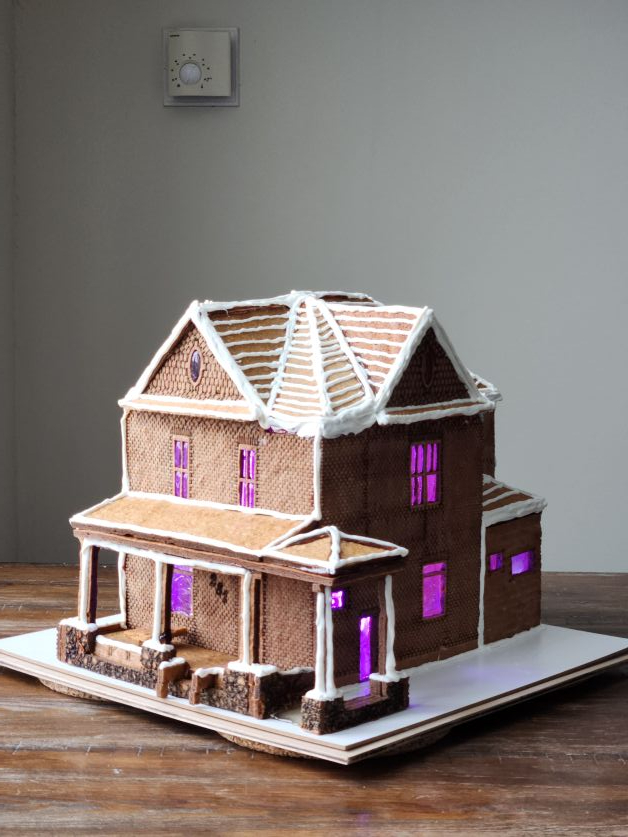
A Calgary artist on Saturday, December 7 delivered a 3D replica of the Gouge House, in Drumheller, where Shawn Pallesen operates Tyrannosaurus Rest Bed and Breakfast. The best part is that it is all edible.
Kacey Bae is a queer, non-binary artist who specializes in food and perishable edible art. They have done a variety of different projects including Calgary City Hall and the Airdrie Public Library. After staying at Tyrannosaurus Rest B&B a couple of times and enjoying their time in Drumheller, Bae set about wanting to create this model.
Bae drew upon the expertise and technology of Thunder Laser Canada, which operates out of the Fuse 33 Maker Space in Calgary and set about on a plan to create the replica.
“I met Shawn and heard the stories of the Jesse Gouge House, and learned that it is not just a house, that it is historic. It has a lot of stories but it was built with love and community,” said Bae.
Jesse Gouge was one of the founding fathers of Drumheller. While much is said about Sam Drumheller and Thomas Greentree, it was Gouge who was an industrial pioneer. A lawyer by trade, in 1907 he came north from the United States to Canada. He eventually settled in Acme opening an implement dealership. He travelled to Verdant Valley to set up a binder and was exposed to the coal mining potential of the area. He and Garnett Coyle formed Newcastle Coal Company and opened the first mine. He became an active community member involved in the board of trade, the local Rotary and the Coal Miners Operators Association. The house was built in 1912 and was the family home for 27 years.
The model Bae built is not a typical gingerbread house. They baked 16 pounds of gingerbread and had to come up with a recipe that was structurally sound, but also could withstand the heat of the radiation lasers to cut out the 58 pieces. The entire house is edible, with the glass made of isomalt sugar; it is bonded using English toffee and the white details are white chocolate.
In all, it took about 26 hours to create.
“Eight hours was just figuring out how to create a three-dimensional sculpture from two-dimensional images,” explains Bae.
On other projects, Bae had CAD drawings that showed a three-dimensional representation. With this, Bae was only able to use still photographs that Pallesen took with his smartphone and a little bit of drone footage to come up with the representation. They also had a few historical photos. Another 10 hours of labour was dedicated to baking, before the cutting and eventual assembly.
“It was like assembling a three-dimensional puzzle. To make this I need to have knowledge on architecture, I need knowledge of graphic design to make vector designs to cut it out with the laser, I needed to have experience with radiation laser to cut it properly, I needed to be a baker, and apparently I needed to be a good 3D puzzle maker too,” laughs Bae.
Pallesen is impressed with the work and is very happy with the final product.
“It is way beyond my expectations, it’s a really cool, project,” said Pallesen.
After seeing it, he says while it is edible, there are no plans to ever eat it. He is working on figuring out a way preserve it and to share the art, possibly displaying it for people to see it in the community.
For Bae, the work shares the spirit of his art.
“My whole art is about life is so short and it is a shame that we are not actively making it sweet.”






















